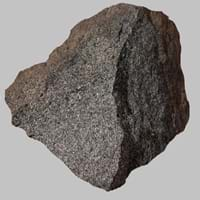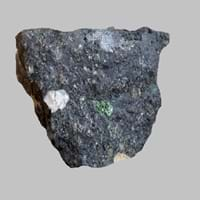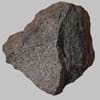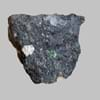Definition
Gabbro is an intrusive igneous rock which is chemically equivalent to plutonic Basalt
Kimberlite is a rare, blue-tinged, coarse-grained intrusive igneous rock, which sometimes contains diamonds and is mostly found in South Africa and Siberia.
Origin
Germany
Kimberley, South Africa
Discoverer
Christian Leopold von Buch
Unknown
Etymology
From Latin glaber bare, smooth, bald
From Kimberley + -ite, from the name of the South African town of Kimberley where the rock was first found.
Class
Igneous Rocks
Igneous Rocks
Sub-Class
Durable Rock, Hard Rock
Durable Rock, Hard Rock
Other Categories
Coarse Grained Rock, Opaque Rock
Coarse Grained Rock, Fine Grained Rock, Opaque Rock
Texture
Phaneritic
Porphyritic
Color
Dark Grey to Black
Black, Bluish - Grey, Brown, Dark Greenish - Grey, Green, Grey
Durability
Durable
Durable
Scratch Resistant
Yes
Yes
Appearance
Veined and Shiny
Dull and Banded
Interior Uses
Countertops, Decorative Aggregates, Homes, Interior Decoration
Countertops, Decorative Aggregates, Homes, Interior Decoration
Exterior Uses
As Building Stone, As Facing Stone, Garden Decoration, Office Buildings, Paving Stone
As Building Stone, Paving Stone, Garden Decoration
Other Architectural Uses
Curbing
Curbing
Construction Industry
As Dimension Stone, Building houses or walls, Cement Manufacture, Construction Aggregate, for Road Aggregate
As a Flux in the Production of Steel and Pig Iron, As a Sintering Agent in Steel Industry to process Iron Ore, As Dimension Stone, Cement Manufacture, for Road Aggregate, Making natural cement, Manufacture of Magnesium and Dolomite Refractories
Medical Industry
Not Yet Used
Taken as a Supplement for Calcium or Magnesium
Antiquity Uses
Artifacts, Monuments, Sculpture
Artifacts, Monuments, Sculpture, Small Figurines
Commercial Uses
Cemetery Markers, Commemorative Tablets, Laboratory bench tops, Jewelry, Sea Defence, Tombstones
An Oil and Gas Reservoir, As a Feed Additive for Livestock, Gemstone, Metallurgical Flux, Production of Lime, Soil Conditioner, Source of Magnesia (MgO)
Types
Not Available
Basaltic Kimberlites and Micaceous Kimberlites
Features
Smooth to touch
Always found as volcanic pipes over deep continental crust, Host rock for Diamond, Is one of the oldest rock, Surfaces are often shiny
Archaeological Significance
Famous Monuments
Data Not Available
Data Not Available
Famous Sculptures
Data Not Available
Data Not Available
Pictographs
Not Used
Not Used
Petroglyphs
Not Used
Not Used
Formation
Gabbro, a mafic rock, forms due to cooling and crystallization of magma underneath Earth's surface.
Kimberlite is an igneous rock and is the main source of diamonds. Its formation takes place deep beneath the Earth’s surface between 150 to 450 kilometres, and are erupted rapidly and violently.
Mineral Content
Augite, Olivine, Plagioclase, Pyroxene
Garnet, Olivine, Phlogopite, Pyroxene
Compound Content
Aluminium Oxide, CaO, Chromium(III) Oxide, Iron(III) Oxide, Potassium Oxide, MgO, Sodium Oxide, Silicon Dioxide, Sulfur Trioxide
Aluminium Oxide, NaCl, CaO, Iron(III) Oxide, FeO, Potassium Oxide, MgO, MnO, Sodium Oxide, Silicon Dioxide, Titanium Dioxide
Types of Metamorphism
Impact Metamorphism
Burial Metamorphism, Cataclastic Metamorphism, Contact Metamorphism, Hydrothermal Metamorphism, Impact Metamorphism, Regional Metamorphism
Types of Weathering
Chemical Weathering
Biological Weathering, Chemical Weathering, Mechanical Weathering
Types of Erosion
Coastal Erosion
Chemical Erosion, Coastal Erosion, Glacier Erosion, Sea Erosion, Water Erosion, Wind Erosion
Grain Size
Coarse Grained
Fine to Coarse Grained
Fracture
Conchoidal
Conchoidal
Porosity
Highly Porous
Very Less Porous
Luster
Not Available
Subvitreous to Dull
Compressive Strength
Not Available
Cleavage
Not Available
Conchoidal
Toughness
1.6
Not Available
Specific Gravity
2.86-2.87
2.86-2.87
Transparency
Opaque
Translucent to Opaque
Density
2.7-3.3 g/cm3
2.95-2.96 g/cm3
Specific Heat Capacity
Not Available
Resistance
Impact Resistant, Pressure Resistant, Wear Resistant
Heat Resistant, Impact Resistant
Deposits in Eastern Continents
Asia
India, Russia
Russia
Africa
South Africa
Angola, Botswana, Cameroon, Ethiopia, South Africa
Europe
Germany, Greece, Italy, Scotland, Turkey
England, Hungary, Iceland, United Kingdom
Others
Greenland
Antarctica
Deposits in Western Continents
North America
Canada, USA
Canada, USA
South America
Brazil, Colombia, Venezuela
Argentina, Colombia, Ecuador
Deposits in Oceania Continent
Australia
New Zealand, Queensland
New South Wales, New Zealand, South Australia, Western Australia
All about Gabbro and Kimberlite Properties
Know all about Gabbro and Kimberlite properties here. All properties of rocks are important as they define the type of rock and its application. Gabbro and Kimberlite belong to Igneous Rocks.Texture of Gabbro is Phaneritic whereas that of Kimberlite is Porphyritic. Gabbro appears Veined and Shiny and Kimberlite appears Dull and Banded. The luster of Gabbro is not available while that of Kimberlite is subvitreous to dull. Gabbro is available in dark grey to black colors whereas Kimberlite is available in black, bluish - grey, brown, dark greenish - grey, green, grey colors. The commercial uses of Gabbro are cemetery markers, commemorative tablets, laboratory bench tops, jewelry, sea defence, tombstones and that of Kimberlite are an oil and gas reservoir, as a feed additive for livestock, gemstone, metallurgical flux, production of lime, soil conditioner, source of magnesia (mgo).










